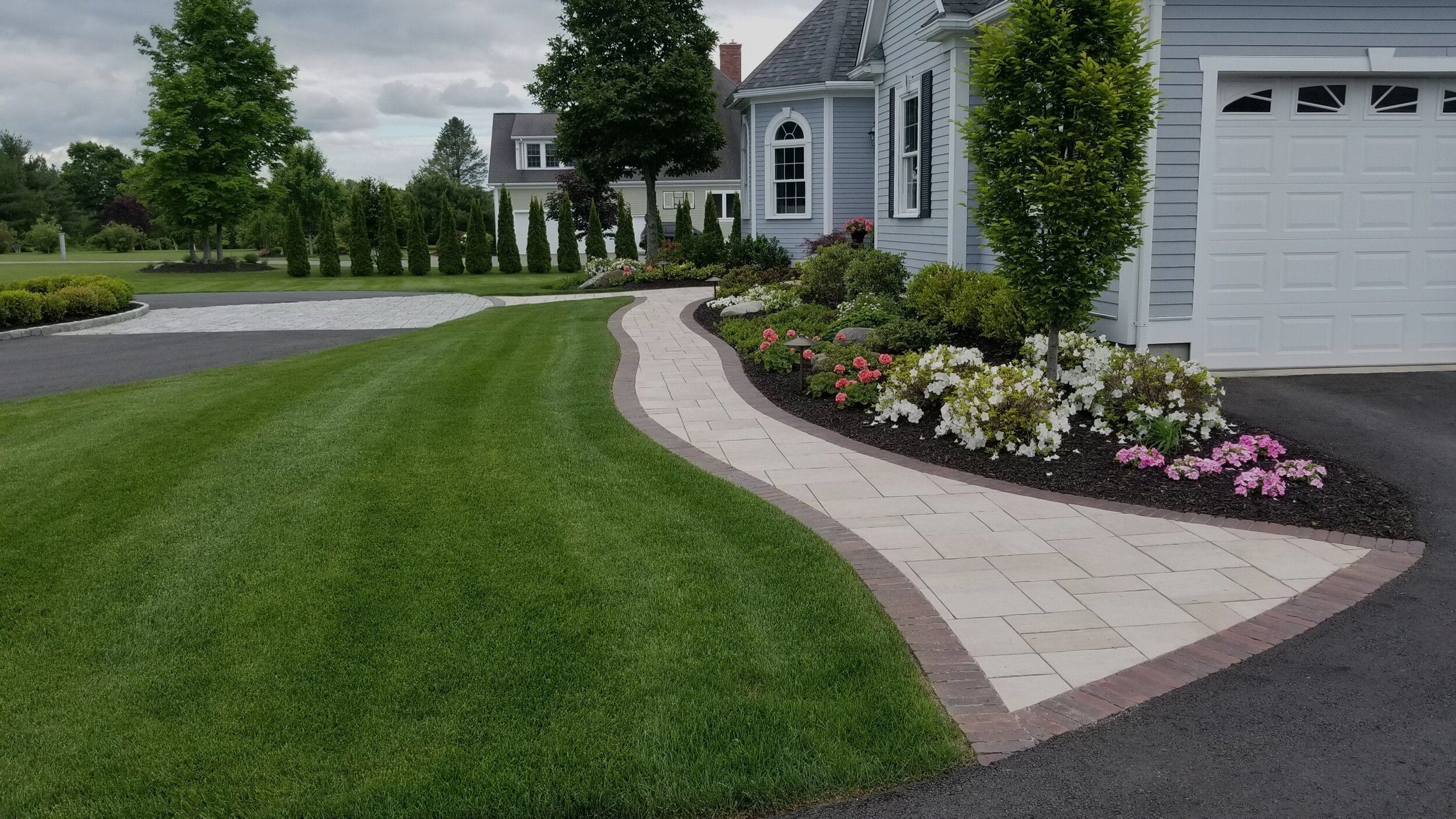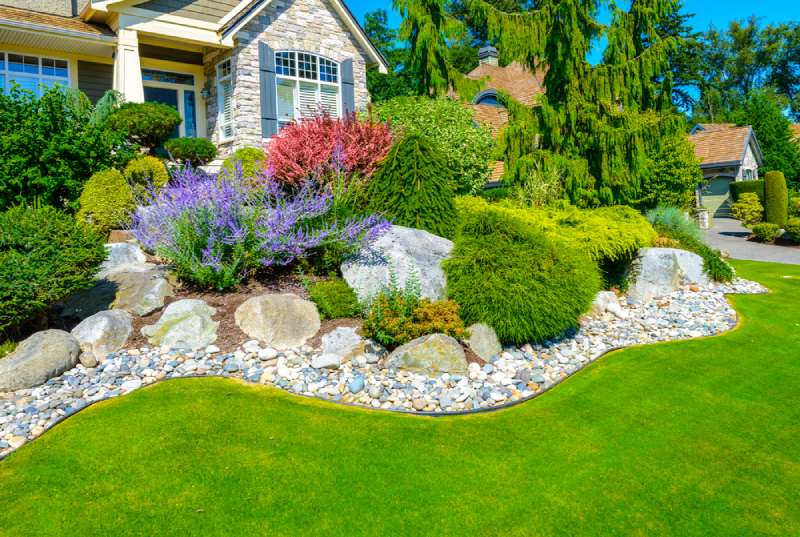A Comprehensive Overview to Creating and Implementing Effective Landscaping Solutions
The art and scientific research of landscape design extend past mere visual appeals; they entail a thoughtful integration of style concepts, environmental stewardship, and functional implementation. What techniques can one use to ensure these landscapes not only prosper but likewise grow in harmony with their surroundings?

Comprehending Landscape Design Concepts
One may question what fundamental aspects add to efficient landscape design. At its core, effective landscape design rests on numerous key concepts that assist the setup and choice of aspects within a room. These concepts include unity, rhythm, percentage, and balance, each serving to develop a harmonious exterior environment.
Unity describes the cohesive connection amongst different parts, guaranteeing that they collaborate visually and functionally. Equilibrium can be achieved with asymmetrical or balanced arrangements, enabling the landscape to really feel stable and inviting. Percentage entails understanding the scale of components in connection with each other and the surrounding setting, advertising visual harmony and comfort.

Assessing Your Outdoor Area
Prior to implementing the principles of landscape style, a detailed assessment of your outside area is crucial. This preliminary analysis aids define the scope of your landscaping job and makes sure that your layout straightens with the unique qualities of your residential property. Begin by assessing the measurements of your room, taking precise measurements to understand the available area for various elements such as outdoor patios, yards, and pathways.
Next, observe the existing attributes of your landscape, consisting of topography, dirt high quality, and drain patterns. These elements substantially influence plant selection and placement. Additionally, analyze the sunshine direct exposure throughout different areas throughout the day, as this will certainly influence the kinds of plants that prosper in your garden.
Consider the microclimates created by frameworks, trees, and various other obstacles, as they can affect temperature level and wetness levels. Take note of any type of existing plants or hardscape elements that you desire to preserve or eliminate. This thorough examination lays the groundwork for a knowledgeable and effective landscape design option, guaranteeing that your design is not just cosmetically pleasing yet sustainable and additionally functional for years ahead.
Sustainable Landscape Design Techniques
These practices not only promote environmental equilibrium yet also improve the useful and aesthetic value of a landscape. Executing effective watering systems, such as drip watering, minimizes water waste and guarantees that plants get appropriate wetness (Palm Desert Landscaping).

An additional effective method is the critical placement of trees and bushes to give natural windbreaks and shade, therefore decreasing energy costs (Palm Desert Landscaping). Rainfall yards can pop over to this web-site be incorporated into the landscape design to handle stormwater drainage effectively, filtering contaminants prior to they get in rivers
Choosing the Right Plants
Choosing the right plants for your landscape is vital to attaining both aesthetic appeal and ecological harmony. The process begins with an understanding of your regional climate, soil conditions, and the certain microenvironments within your landscape. Analyzing variables such as sunshine direct exposure, dampness degrees, and existing vegetations will certainly aid you pick plants that her explanation grow in your unique setup.
Take into consideration including indigenous plants, as they are well-adapted to neighborhood problems, call for much less upkeep, and assistance regional wildlife. Furthermore, choosing a diverse range of species can enhance biodiversity while reducing the threat of condition and bug break outs. It is important to examine the growth habits, blooming durations, and seasonal shades of prospective plants to create a dynamic and cohesive landscape.
Furthermore, consider the meant use of the space; for example, if the area will experience high foot website traffic, choose durable ground covers. By thoughtfully picking plants that line up with both your ecological requirements and visual objectives, you can create a lasting landscape that not only enhances your residential or commercial property yet likewise contributes favorably to the surrounding ecological community.

Application and Upkeep Approaches
Once the best plants have actually been picked for your landscape, the focus shifts to efficient execution and recurring maintenance methods. Effective setup begins with correct site preparation, that includes soil testing to identify nutrient degrees and pH, complied with by modifying the dirt as required. Carefully arrange straight from the source plants according to their development habits and light requirements, guaranteeing appropriate spacing to advertise healthy and balanced development.
Watering is a critical element of implementation. Establish a watering schedule that considers the specific needs of each plant species, adjusting for seasonal changes. Utilizing drip watering systems can boost water performance and minimize overflow.
Upkeep techniques should be executed to guarantee the longevity and vitality of your landscape. Normal jobs include weeding, mulching, and pruning to control development and protect against illness. Fertilization ought to be conducted based upon dirt tests, providing the essential nutrients without over-fertilizing.
Monitoring for illness and pests is essential; early discovery can stop significant damages. Seasonal changes to upkeep routines, such as preparing and winterizing perennials for spring development, will ensure that your landscape continues to be healthy and aesthetically appealing year-round.
Conclusion
In conclusion, efficient landscape design services call for an extensive understanding of design principles, thorough assessment of outside rooms, and the application of sustainable strategies. The selection of proper plant varieties plays a vital duty in enhancing aesthetic allure and ecological durability - Palm Desert Landscaping. Effective execution and ongoing maintenance better ensure the durability and vigor of landscapes. By incorporating these elements, landscapes can be transformed into attractive, functional atmospheres that advertise biodiversity and add favorably to community health.
One might wonder what foundational elements contribute to effective landscape design. At its core, successful landscape design pivots on numerous key concepts that lead the setup and option of components within a room.Picking the right plants for your landscape is critical to attaining both aesthetic allure and environmental harmony. It is vital to examine the growth practices, blooming periods, and seasonal shades of possible plants to develop a natural and dynamic landscape.
As soon as the ideal plants have been chosen for your landscape, the focus changes to reliable application and continuous maintenance strategies.